#Vehicle Structural Design Market
Explore tagged Tumblr posts
Text
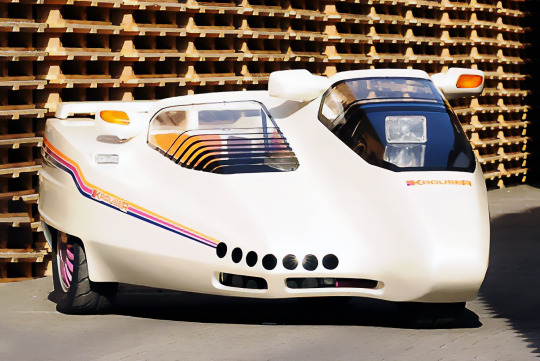
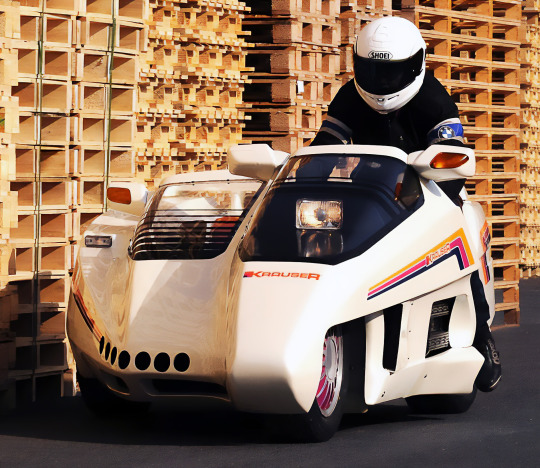
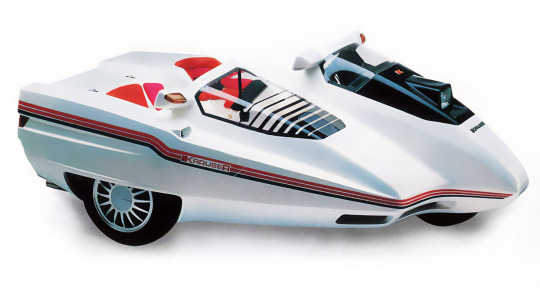
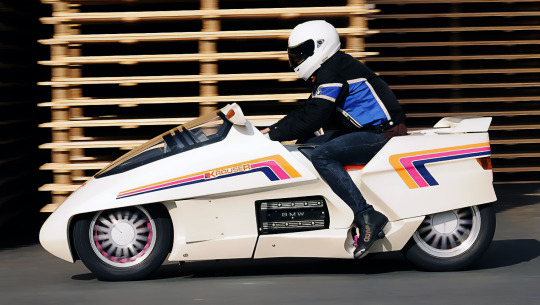

Krauser Domani, 1988. A 3-wheeled vehicle that resembles a motorcycle with a sidecar designed by Michael Krauser. However the passenger "sidecar" of the Domani was structurally an integral part of the frame and bodywork using elements from racing sidecars. The design also allowed for a small luggage compartment. It was powered by a 150hp BMW K 1200 engine driving the single rear wheel via a 5-speed gearbox. Around 100 were made for the European and Japanese market
3K notes
·
View notes
Text
I doubt it was predicted or designed, but when the practice emerged of delegating industrial policy to local governments, China invented a structural form of antitrust. The central state declares what industries are to be favored, and then many localities toss contenders into the ring. The unsurprising result is competition. At the national level, with astonishing speed, industries with world-class competences emerge, even when — especially when — no "national champion" comes to dominate. Great industries are what a nation wants, not great firms. Firms are just the players. They perform extraordinary feats, and we cheer them, but they come and go. The industry is the league. It is what endures and delivers decade after decade. A decade ago China did not produce electric vehicles. Now it is the world leader. It is the same story with batteries, solar panels, steel. In the US, we tend to provide government support to established national champions, Boeing perhaps, or Intel. How is that working for us? Large consolidated firms become specialists in exploiting market power and political influence rather than any technical facet of production. What if we financed state governments to field local heroes and compete in the big leagues? It boggles the American imagination to think that medium-sized, US-state-level enterprises could compete in high-tech, capital-intensive industries. But isn't China's experience an existence proof? Shouldn't the share-buyback-heavy, technical-achievement-light experience of firms like Boeing and Intel chasten our conventional wisdom?
Must do socialism so we have intense competition between the Colorado smartphone and the Massachusetts smartphone
259 notes
·
View notes
Text
Alright I can't finish this all in one sitting, but here's at least a bit of.... something? A word vomit? A prelude to smut about the eroticism of the machine? For all you robot, mecha, and spaceship fuckers out there. @k1nky-r0b0t-g1rl that means you
Pappy always said that manufacturing biological transportation was nothing knew. I mean, shit, humanity's been breeding horses for how long? To him, not much was novel about what was going on in the shipyards way out by Neptune when I was a kid.
But Pappy didn't know a lot of things. And he certainly didn't meet Roseanna.
The Federation Navy had experimented with biologics for decades. The idea was to create self regenerating ships- something to interface with the hull, move the new titanium plates and particulates into place, have a living, growing mass interfacing with the steel so that the ship didn't have to head all the way back to the yards to patch up after every dogfight.
The first generation... worked. With a full time crew, that is. Full time people on deck jabbin the rigid, chitonous interface with the hull full of growth hormones to get them to set just right. Full time onboard bioengineers to compute what signaling cocktail ya need to hit 'em with to get it to grow back right. Skilled onboard technicians to shave back the chitin when it tried to overgrow the titanium, and slap some new cells in to seed the process in heavily damaged areas. Less input material, less time in the yards, but far more manpower. Great for a Federation cruiser on deep space peacekeeping missions. Far too complex for small craft. Right?
Until some bastard put brains in 'em.
Well. A lotta suits would say that they weren't brains. They were a diffuse network of sensory neurons and ganglia, living inside the body of the ship, integrating signals from a skin of alloyed metal and fibrous protein, calculating power draw too and from various components, and integrating with the mechanical and electrical components of the ship to precisely manage the "wound healing" process of the vessel. And of course, it just so happened that one of those ganglia was larger and more complex than the rest of them, and it just so happened that the computer interfaces with this ganglia exhibit complex, thinking behaviors on the level of human cognition, and it just so happens that most pilots and navigators reported them developing their own personalities.....
But of course, the Navy didn't want anyone to have some kind of pesky empathy in the way of their operations. And they certainly didn't want anyone side eyeing the rate at which they disposed of the damn things, and let them suffer and rot after disposal. So as far as the official record was concerned, they didn't have brains.
Like most people in the belt, I found Rosie on a... unsponsored field trip to the Neptune scrap yards. She wasn't a ship then. She wasn't much of anything. Not much more than a vat with the central ganglia and just barely enough of the stem cells needed to regrow a network. But I took her all the same. Brains were valuable. Few pilots outside the Navy had them back then. Nowadays, a black market for "brain seeds", a cocktail of neuronal stem cells and enough structural stem cells to grow your own into the chassis of your ship. They were pumpin' em out, and leaving them to die. It was cruel. They may be vehicles, but they're a livin' being too.
But I digress. I'd never do that to Roseanna. I make sure she gets proper care. And for a good, proper, working ship? That includes some good, proper work.
The asteroid we were docked in was one of my usuals- good bars, nice temp quarters, nice views of the rock's orbiting twin, and a spacious hanger for Rosie to rest in. The chasiss I had imprinted Roseanna to was a 40-meter light skipper, with some adjustments for handling deep space trips. It was pretty much the smallest thing you could actually use to live and work for long periods of time, but it got the job done. The angular design made the entire ship look like a wedge, or the blade of a bulky dagger. It didn't hurt that each bottom edge was fortified with a sharpened titanium blade, turning the entire sides of the ship into axe-like rams.
Those would probably come in handy today.
I approached Roseanna on the catwalk above her, marveling her alloyed scales. I could almost see her shudder in anticipation as my footsteps vibrated through the air above her. I took the steps down, and hit the trigger to open her top hatch.
When the news got out of the Navy scuffling with a rebelling mining station, an electric air raced across the station. Some went about their day as normal. Some resigned themselves to picking at the leftovers after the dust had settled. And some, like me, knew that they could get the finest pickings.
I strapped in to the pilot's seat like it was an old boot.
"Welcome, Captain Victoria."
Rosie could talk, but more often than not, she chose not to. But she understood me just fine. Most of our communication took place using her three prerecorded lines- her welcome statement, affirmative, and negative- as well as the tiny screen showing a small, emoticon face. Many pilots chose to give their ships an elaborate render, but Rosie preferred it this way. It was the first face I gave her, from somewhere out of the scrap heaps, and she refused any offer I made to upgrade. Secretly, I was overjoyed. To me, that was her face. That was her voice. And it was beautiful to see her true self through them.
I brushed my hands across her paneling. Across the switches, the hydraulic controls for the plasma fuel, the steering, the boosts, the comms channels. The thing with biologics was that you were still the pilot. For whatever reason, they hadn't quite gotten to the point where the brains could take over their own piloting. My personal opinion was just that their personalities lacked the ambition to. But whatever reason that was, the best pilots were still the ones that knew both their ship, and the ship's brain. And me and Rosie? We knew each other well.
As my fingers touched the brushed aluminum controls, rimmed with chitinous layers rooting them into the ship, I could feel the walls around me holding their invisible breath. "Do you know what we're doing today, Rosie?"
Her tiny panel flickered on. ...?
"We got a scrap run."
^_^
:)
^_^
Her panel flicked between various expressions of excitement. My finger quivered on the main power, holding for a moment before flicking it on. The primary electronics of the ship hummed to life, and what Rosie controlled pulsed with it. My hands moved across the main functional panels- main hydraulic plasma valve, exhaust ports open, and finally, flicking the switch the start the plasma burner.
My hands gripped the steering. The hanger's airlock doors opened in front of me. My neck length hair started to float as the station's gravity shut off. I hit the switch to unlatch from the supports above. For a moment, we hang there. The dull crackle of the idling plasma burner is the only sound that resonates through Rosie's hull.
Go time.
I punch the boost.
#eroticism of the machine#robot girl#mecha girl#spaceship girl#the fuck do I even tag this LOL#yall gotta tag this and make sure it gets to the right spaces for me okay
280 notes
·
View notes
Text
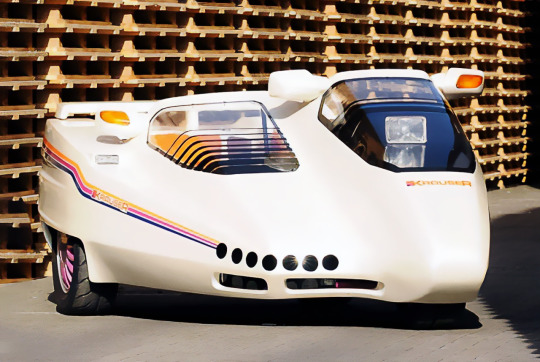
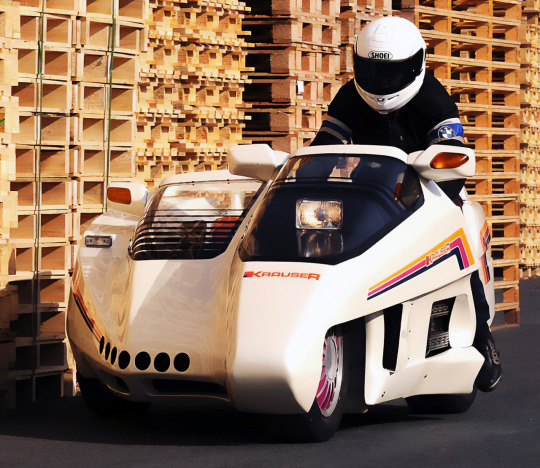
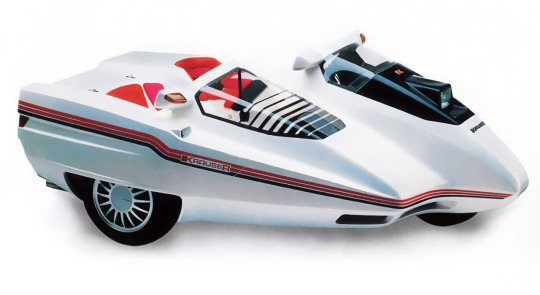

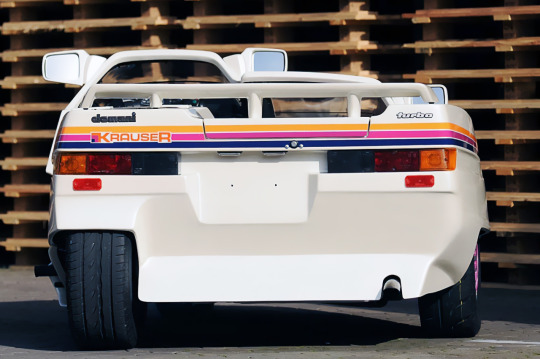
Krauser Domani
Krauser Domani, 1988. A 3-wheeled vehicle that resembles a motorcycle with a sidecar designed by Michael Krauser. However the passenger "sidecar" of the Domani was structurally an integral part of the frame and bodywork using elements from racing sidecars. The design also allowed for a small luggage compartment. It was powered by a 150hp BMW K 1200 engine driving the single rear wheel via a 5-speed gearbox. Around 100 were made for the European and Japanese market
65 notes
·
View notes
Text

1943 05 German Ford V8 G81 Cabriolet Passenger Car - box art Roden
At the end of the 1920s, many leading American companies began to make significant investments in the economy of Germany during the Weimar Republic. Many industries, including the automobile industry, promised much for the industrial potential of the nation, which had begun to emerge from economic crisis. Germany, birthplace of the automobile, has always been one of the trend setters and had introduced many new technologies in car production, but at that time the country was in serious financial trouble and needed investment in significant volumes. Henry Ford's company, the "father" of automobile manufacturing in the United States, had great ambitions to expand the sale of its model range in Europe, following over saturation of its own market. In 1928, an agreement on cooperation was signed between the Ford company and the leaders of the Rhine Province, and two years later, in the presence of Henry Ford himself and Konrad Adenauer, the burgomaster of the city of Cologne, the first stone laying of the grand opening of a new plant for the production of cars and trucks took place. Ford transferred some of their most important tooling, for increased standardization between the U.S.-produced cars and those from the subsidiary in Germany. The German-made cars were very similar to their American relatives, differing only in minor details such as small exterior elements. After the rise to power of the Nazis under Hitler, cooperation between the USA and Germany did not stop, but on the contrary increased, as the new government embarked on a course of gradual remilitarization, therefore necessarily increasing the number of vehicles in the newly created army. The Ford concern transferred more and more new technology to its company in Germany during this time. Among the passenger cars of the plant, the Ford Eifel 20C was the most popular - from 1935 to 1939, more than 61,000 of them were produced. Later, the V8-48 type was produced (more than 5 thousand). From 1937, production of the G78A type began, and a year later, the G81A. These cars had a more powerful 8-cylinder engine, an improved body shape and increased chassis strength. With the beginning of the Second World War, a significant number of cars, including those from private property, were requisitioned for the needs of the army. A relatively small number of cars of this type were produced with a cabriolet body. A number of changes were made to the design to strengthen the body structure with an open top, while the chassis did not undergo any significant changes. This version of the car was used in various units of the Wehrmacht, primarily as a staff car for middle-ranking officers. Due to the constant lack of spare parts, their numbers gradually decreased, and in the final phase of the war they were a relative rarity in combat units.
10 notes
·
View notes
Text
Why the headlights of a vehicle are generally yellow in colour rather than white?
The use of yellow headlights in vehicles, while less common today, stems from a combination of historical, functional, and regulatory factors. Here's a structured breakdown of the reasons:
1. Historical and Regulatory Context
France's Mandate (1936–1993): France required selective yellow headlights by law, believing yellow light reduced glare for oncoming drivers. This regulation influenced vehicle design in Europe and former French colonies.
Selective Yellow Filter: This tint filtered out blue wavelengths (below 500 nm), which scatter more in fog and rain, improving visibility in adverse conditions.
2. Functional Advantages in Adverse Weather
Reduced Scatter: Yellow light (550–600 nm) has longer wavelengths than blue-rich white light, minimizing scattering in fog, rain, or snow. This enhances contrast and reduces "whiteout" glare.
Improved Penetration: In foggy conditions, yellow light can illuminate road markings and obstacles more effectively than white light.
3. Human Vision Considerations
Scotopic Sensitivity: Human eyes are more sensitive to green-yellow light (≈555 nm) in low-light conditions, making yellow headlights appear brighter at night.
Glare Reduction: Yellow light contains less blue, which is harsh on dark-adapted eyes, reducing discomfort for oncoming drivers.
4. Bulb Technology and Aesthetics
Halogen Bulbs: Older halogen bulbs naturally emit warmer (2700–3500K) light. Without coatings, this appears yellowish.
Vintage Appeal: Yellow headlights are associated with classic cars (e.g., Citroën 2CV, Volvo Amazon), appealing to enthusiasts.
5. Modern Shifts and Exceptions
Regulatory Changes: Most countries now permit white light (e.g., ECE and DOT standards), favoring LEDs/HIDs with superior brightness and adaptive beam patterns.
Niche Applications: • Rally/Racing: Yellow auxiliary lights are used for fog penetration (e.g., WRC, Le Mans). • Aesthetic Choice: Some drivers install yellow tints or LED pods for a retro or off-road look.
6. Trade-offs with White Light
Brightness vs. Comfort: White light (5000–6000K) offers better color rendering and range but can cause glare in poor weather.
Technological Solutions: Modern cars use adaptive headlights, automatic high beams, and fog-light integration to mitigate weather challenges without relying on yellow filters.
Conclusion Yellow headlights were historically favored for their glare reduction and fog performance, driven by regulations like France's mandate. While white light dominates today due to advancements in LED/HID technology and adaptive systems, yellow remains relevant in motorsports, niche markets, and as a stylistic choice. The shift reflects a balance between safety, regulation, and technological progress.

#led lights#car lights#led car light#youtube#led auto light#led headlights#led light#led headlight bulbs#ledlighting#young artist#led light bulbs#lamp#lights#HID#yellow headlights#car culture#cars#self care#cartoon#race cars#classic cars#car#suv#vehicle#automobile#muscle car#car light#headlight bulb#headlight restoration#headlamp
6 notes
·
View notes
Text
As a matter of public and driver safety, the Cybertruck is an unmitigated disaster. Since the first trucks shipped in November 2023, they have been plagued by complaints and defects. Musk brags about the strength of the truck body, but the stiff and unyielding structure only ensures any accident will be far worse for not having the kind of collapsible frame as every other car on the road.
The death trap design has been the subject of one disastrous news item after another. The cover of the Cybertruck’s acceleration pedal had a defect that caused it to slip off and get stuck, prompting a recall. In his running account of his problems with the vehicle, Rolling Stone writer Miles Klee describes how the truck’s door gashed open a user’s leg and part of the rear fender went flying off for no apparent reason.
The extra thick windshield, meanwhile, creates an infotainment environment free from all distraction — including the sounds of the screaming pedestrians you’re plowing through at the farmer’s market while you watch “Shark Tank” on the oversized screen. Not that the driver is any safer: The windshield guarantees that in the event of an accident, the truck’s passengers will be pulped in the vehicle interior.
All of which begs the question: How are these vehicles street legal in the U.S.?
26 notes
·
View notes
Text
Forecasting the Future: What Market Research Reveals About the UAE Used Car Industry
The used car industry in the United Arab Emirates is on a growth trajectory, driven by affordability, digital innovation, and evolving consumer habits. According to market research, the UAE used car market is estimated to be valued at USD 20.55 billion in 2025, with expectations to reach USD 35.78 billion by 2030, growing at a compound annual growth rate (CAGR) of 11.73% during the forecast period from 2025 to 2030. Key Drivers Behind the Market Growth Several major trends are fueling this expansion: Affordability and High Demand for Private Vehicles: With the cost of new cars rising, used cars offer a practical alternative for budget-conscious consumers, including the large expatriate population in the UAE. Digital Transformation: The rise of online platforms and digital showrooms has made it easier than ever for customers to browse, compare, and purchase used vehicles, adding transparency and efficiency to the process. Certified Pre-Owned (CPO) Programs: The increasing availability of certified used vehicles backed by warranties has helped build consumer trust, encouraging more first-time buyers to opt for pre-owned cars. Wide Variety of Inventory: From economy cars to premium vehicles, the UAE market offers a diverse range of used cars that cater to every lifestyle and income level. Changing Consumer Preferences Consumers are showing a clear preference for vehicles priced between $5,500 and $8,200, making affordability a primary purchasing factor. Popular brands such as Toyota, Nissan, and Mitsubishi dominate the market due to their reputation for reliability and lower maintenance costs. Additionally, many buyers are prioritizing GCC-spec vehicles models specifically designed to withstand the UAE’s extreme weather and road conditions due to their enhanced durability and performance. Market Segmentation and Regional Insights Dubai and Abu Dhabi continue to lead in terms of sales volume due to their dense population and urban mobility needs. Online classifieds and auto marketplaces are especially popular in urban regions, offering convenient access to detailed listings and competitive pricing. Challenges and Opportunities Despite the strong outlook, the UAE used car market faces a few challenges: Unorganized Dealership Segments: Market fragmentation and quality inconsistency among smaller dealers can affect customer trust. Regulatory Compliance: Ensuring vehicles meet road safety and emissions standards is increasingly important for sustainable growth. Yet, these challenges open the door to innovation: Technology Integration: Use of AI, big data, and blockchain can enhance vehicle history transparency and streamline the customer experience. Export Opportunities: The UAE's strategic location makes it a key re-export hub, especially for used vehicles heading to Africa, Asia, and other Gulf countries. Conclusion The UAE used car market is evolving rapidly, with data showing strong growth potential through 2030. As the industry becomes more structured and digitally driven, stakeholders from dealerships to fintech providers can seize new opportunities by addressing shifting consumer needs and adopting innovative solutions. With an estimated value of USD 35.78 billion by 2030, the UAE's used car sector is no longer just an alternative to buying new it’s a dynamic market that reflects the region's changing economic landscape and growing appetite for smart mobility.
source : https://www.mordorintelligence.com/industry-reports/united-arab-emirates-used-car-market
2 notes
·
View notes
Text
Setting Blurb Art: Soldiers of the 36th Century
(A massive shout out and thank you to the artist @hyliabeilschmidt, go gib her your money!)
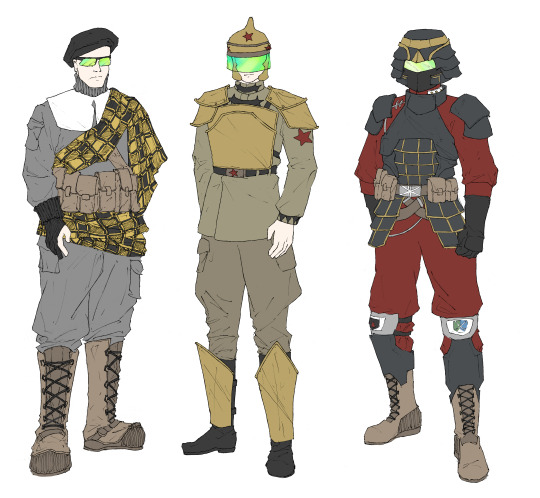
United Markets "Covenanter" Militiaman - While the non-collectivist collective of non-states that form the United Markets (U.M.) do not practice conscription, it is heavily frowned upon for sovis (sovereign individuals) to not do their bit against the forces of statism by participating in a local militia. As they have become the dominant sub-faction within the U.M., the Hoppean "Covenant" model of non-state structure become wildly copied. So too did its style of fashion, on and off the battlefield. This militiaman is wearing the "Sunday Best" combat uniform made popular by Hoppeans of Ceres. Originally meant as a unifying mark of material culture for the original covenant community on Ceres, the black and gold tartan is now worn by all that pledge to take up arms in defense of the United Markets.
World Congress of Freedom "Clonscript" Trooper - Portmanteau of clone and conscript, referring to the cloned portion of the World Congress of Freedom’s military, known as the Peoples’ Legions. W.C.O.F. Party Members consider “Clonscript” derogatory; they prefer Combat Bioautomata. Party Members of the W.C.O.F. donate genetic material to flash clone soldiers to fight in their stead (rumor has it the DNA of fallen enemies is harvested as well). Due to the nature of their production all Clonscripts are sterile, and their bodies are not designed to last beyond thirty years after decanting. This Clonscript has survived his first deployment, and has received body armor signifying his promotion from Hastati to Principes. The next human wave he is sent to, he may receive combat vehicle support.
Corporate Empire Land Force "Dragoon" (Blood Guard) - In the Corporate Empire, the highest award one can receive in the line of duty is the Anderson Blood Diamond. Recipients of the Blood Diamond, or a member of the recipient's immediate family (if awarded posthumously), are inducted into the ranks of the Blood Guard. The Blood Guard serve as the Land Force's fanatic light infantry (the red-blooded counterpart to the cooler and collected Shock Guard tankers), and are more than willing to perform more acts above and beyond the call of duty. Guardsmen like this one wear the crimson red duty deel under their combat armor. An unspoken rule among members of the Blood Guard is to never be in the same bar with members of the Shock Guard. No glory is won in inter-service bar fights.
9 notes
·
View notes
Text
GIG VS AI

Ladies & gentlemen, the greatest fight of the 21st century is expected to arrive within this 2 decade (2020 to 2040), where we will witness a clash between our economic gladiators, who are the GIG economy and its components, and the AI economy and its components. This fight has the potential to decide what will be the future of “bottom ones” in the world.
On one side of the global arena, we have the GIG economy, which means a marketplace where individuals (mostly labor categories) are hired for projects that are shorter in duration and lack all kinds of formal sector traits in it, for example, food delivery, free lancing, project-based hires, etc., and according to a World Bank report, it is expected to have 435 million people. On the other side of global arena, we have AI economy, which means a world where every action of an individual will have a basic support system which will ease its work and help to excel at faster, better and more straight way, for Example: AI writing a blog, AI Drone delivery, AI writing assignments, AI as an employee responsible for hiring and firing an employee, etc.
You must be wondering why two oceans are being compared; it is because they both share the same boundary and are fading at a very fast rate. Also, you must be wondering, “So what??/..., I am not liable for anything and neither affected.” If economics had been this simple, then earthians might never search for heaven.
The Gig economy face a major challenge from AI and you might even have figured out what the challenges might be, but just to make clarity in thoughts, let me explain
The challenges are:
1) JOB DISPLACEMENT: The first and foremost challenge is the job displacement of being fired. Any gig economy roles, such as delivery drivers, customer service agents, and data entry workers, are at risk of being automated by AI technologies like autonomous vehicles, chatbots, and machine learning algorithms.
2) SKILLS OBSOLESCENCE: AI advancements require gig workers to continually upskill to stay relevant. For instance, tasks like basic graphic design or transcription can now be automated, pushing workers to adapt to more complex roles.
3) TECHNICAL SELECTION: Many gig platforms use AI to allocate tasks, evaluate performance, and determine pay rates. This can lead to feelings of dehumanization and a lack of transparency in decision-making.
4) REGULATORY CHALLENGES: Gig workers often provide personal data to platforms, and AI can exploit this data for profit without proper worker protections.
5) MARKET CENTRALIZATION: AI-driven gig platforms can centralize market power, reducing workers' ability to negotiate terms. As platforms grow, they often extract higher fees or impose stricter conditions on gig workers.
These are some dangers that will be faced by nearly 450 million GIG workers in the future from the AI, so now the question in your mind might be, “What can GIG do in front of AI to ensure its survival?” The answer is “Collaborate." The GIG economy, instead of considering AI its opponent, has to consider it a future ally.
The collaboration ways are:
· AI may evaluate market trends and suggest new abilities that employees should acquire in order to stay competitive.
· AI-Enhanced Creativity Tools: To improve their work and produce results more quickly, gig workers in creative industries (such as writing and design) can make use of AI tools like generative design or content creation platforms.
· Fair pricing models: AI is able to determine the best prices for services by taking into account worker effort, market conditions, and demand, which guarantees more equitable pay structures.
· Transparent Ratings and Feedback: By detecting and reducing biases in customer reviews or ratings, AI algorithms can guarantee that gig workers are fairly evaluated.
· Hybrid jobs: Gig workers can cooperate with AI systems in jobs like monitoring or optimizing AI outputs that platforms can introduce.
· Resource Optimization: AI can optimize routes, cut down on fuel usage, and save time for services like delivery and ride-hailing.
· Improved Matching Algorithms: AI can be used to more effectively match gig workers with jobs that fit their locations, preferences, and skill sets. This can increase job satisfaction and decrease downtime.In summary, the titanic conflict between the AI and gig economies represents a chance for cooperation rather than a struggle for supremacy. The difficulties presented by AI—centralization of the market, skill obsolescence, and employment displacement—are formidable, but they are not insurmountable. Accepting AI as a friend rather than an enemy is essential to the gig workforce's survival and success.
Gig workers can increase productivity, obtain access to more equitable systems, and open up new growth opportunities by incorporating AI tools. In a fast-changing economy, AI can enable workers to thrive through hybrid roles, transparent feedback, and resource optimization. This change must be spearheaded by platforms, legislators, and employees working together to ensure equity, inclusion, and flexibility.
Our capacity to strike a balance between innovation and humanity will determine the future of the "bottom ones." The decisions we make now will influence the economy of tomorrow, whether we are consumers, policymakers, or gig workers. Let's make sure that the economic legacy of the twenty-first century is defined by cooperation rather than rivalry.
2 notes
·
View notes
Text










Churchill Square, Edmonton (No. 2)
Churchill Square (officially "Sir Winston Churchill Square") is the main downtown square in Edmonton, Alberta, which plays host to a large number of festivals and events including: the Edmonton International Street Performers Festival, Edmonton Fashion Week, The Works Art & Design Festival, Taste of Edmonton, Cariwest, and Edmonton Pride.
It is bordered on the north by 102A Avenue, on the west by 100 Street, on the south by Harbin Road (102 Avenue) and on the east by Rue Hull (99) Street. In 2009, 102A Avenue was closed to vehicle traffic permanently, providing easier pedestrian access to City Hall.
Surrounding the square are several cultural and governmental buildings, including Edmonton City Hall to the north, the Law Courts and the Art Gallery of Alberta to the north-east, Chancery Hall and the Francis Winspear Centre for Music to the east, the Citadel Theatre to the south-east, the Stanley A. Milner Library (the main branch of Edmonton Public Library) to the south and Edmonton City Centre mall to the west.
The centrepiece of the square builds a life-size bronze statue of Churchill, unveiled by Lady Soames on May 24, 1989. It is a copy of a statue made by Oscar Nemon.
Historically, Edmonton's main square was Market Square, located just to the south of Churchill Square, on the site of the present Milner Library. The City Market was housed in Market Square from its beginning in 1900, originally with the market happening outdoors. Successive plans were considered to develop the square into a civic centre, beginning in 1912. A building was built far away on 107 Avenue for the market to be moved indoors in November 1914, but was never used for this purpose and was boycotted by vendors and customers. The market returned to its original location and the city agreed to help construct a shelter. Beginning in 1915 the market was moved indoors, and by 1920 only overflow stalls were outside. From 1916, when the shelter was built, to 1965, when it moved off the site, the market flourished as the hub of Edmonton life. The City Market was finally shifted east to 97 Street, and the area was redeveloped according to a plan to create a "civic centre" in the area by constructing the new art gallery and library to accompany the new city hall which had been built in 1957.
In 1969, Lillian Shirt drew national media attention for protesting housing discrimination by erecting a tipi on the square. During the protest, which lasted 12 days, was joined by several others who set up tents and an additional tipi.
Churchill Square has undergone several face-lifts, the most recent, expensive, and most controversial, being completed in 2004, in time for Edmonton's Centennial Celebrations. These renovations saw the removal of a large amount of green space, as well as the building of several new structures in the square including an amphitheatre, a waterfall, as well as several structures for retail space (currently occupied by the Three Bananas Cafe and Tix on the Square).
Although Churchill Square is not the name of any street in Edmonton, and all the streets in the area are named, the square is used as the address for buildings facing it, they are numbered clockwise starting in the north.
Source: Wikipedia
#Churchill Wire Centre by Max Dewar#Sir Winston Churchill Square#City Hall Plaza#Churchill Square#Edmonton City Hall#Dub Architects#Edmonton City Hall Water Fountain#Art Gallery of Alberta by Randall Stout#Light Venturi by Terri Frost#fountain#public art#Alberta#Canada#summer 2024#travel#original photography#vacation#tourist attraction#landmark#cityscape#architecture#Edmonton#downtown#Friendship Tower
4 notes
·
View notes
Text
Piaggio Brings the Moto Guzzi Stelvio to Indonesia

The good news, however, for adventure bike enthusiasts is well, Moto Guzzi Stelvio. Released by PT Piaggio Indonesia, this bike boasts sophisticated technology with iconic design. This motorcycle has been specially designed to ensure that no matter what kind of terrain one finds himself in, there will be comfort and security. New update- Piaggio Fast Forward (PFF) Rider Assistance Solution, constructed by Piaggio's robotics team at their headquarters in Boston, Massachusetts, USA. With radar, this system is now the first to be fitted on a two-wheeler; this is the new Moto Guzzi Stelvio. For adventurers For riders who want to take in the twisty roads of Asia, and still retain an appreciation for a combination of off-road capability and adventure travel, might end up falling under the spell of this motorcycle.
The Moto Guzzi Stelvio is available in two versions and has been designed to be a high way motorcycle as well as an off-road vehicle. That makes it fit perfectly for the needs of riders, who are accustomed to riding on various terrains. It has been very well designed to glide through highways or toss through roughest of terrains, complete assurance that the rider would face neither inconvenience nor safety.
As announced by PT Piaggio Indonesia's Managing Director and Country CEO Marco Noto La Diega, "We proudly unveil to you the new Moto Guzzi Stelvio, a high-tech two-wheeled rover designed with unique style." He further adds that this motorcycle's latest iteration boasts not only modern styling but also can offer great performance.
The Moto Guzzi Stelvio is founded on the technology that is possessed by Piaggio Fast Forward, which is a division the Piaggio Group made in 2015. PFF is located in Boston and is foremost involved with developing robotics and rider assistance systems in advanced technologies. The Moto Guzzi Stelvio designed with the Rider Assistance Solution of PFF is equipped with radar use to detect other cars and assists riders to have safe drive by controlling their situation and knowing exactly what is going on around them while on the road. Built for Performance
At the very heart of this Moto Guzzi Stelvio lies a 90° Compact Block V-twin engine. An engineering marvel that the company meant primarily to bring down vibrations sharply and to offer a rather very smooth ride even at high speeds, the powertrain breathes in just enough air to produce 84.6 kW of power at 8,700 rpm while peaking at a maximum torque of 105 Nm at 6,750 rpm. This motorcycle will suit the rider who hopes for comfort and is complemented with a balance of power and performance.
It has an attractive feature of functional design. The Stelvio Moto Guzzi was so designed as to be functionally effective and therefore, a type of terrain you had fixed for the day would matter nothing. Robust structures in modern features such as PFF radar systems make the ride adventurous and also very safe.
For more updated information about the automotive market, the latest cars & bikes, Please visit our website https://www.autoini.com
2 notes
·
View notes
Text

LETTERS FROM AN AMERICAN
May 14, 2024
HEATHER COX RICHARDSON
MAY 15, 2024
Today the White House announced tariffs on certain products imported from China, including steel and aluminum products, semiconductors, electric vehicles, batteries and battery components, solar cells, ship-to-shore cranes, syringes and needles, and certain personal protective equipment (or PPE). According to the White House, these higher tariffs are designed “to protect American workers and businesses from China’s unfair trade practices.” Tariffs are essentially taxes on imported goods, and altogether the tariff hikes cover about $18 billion in imported goods.
In 2018, Trump abruptly ended the economic era based on the idea that free trade benefited the global economy by putting tariffs of 25% on a wide range of foreign made goods. This was a cap to a set of ideas that had been sputtering for a while as industries moved to countries with cheaper labor, feeding the popular discontent Trump tapped into. Trump claimed that other countries would pay his tariffs, but tariffs are actually paid by Americans, not foreign countries, and his have cost Americans more than $230 billion. Half of that has come in under the Biden administration.
Trump’s tariffs also actually cost jobs, but they were very popular politically. A January 2024 National Bureau of Economic Research working paper by David Autor, Anne Beck, David Dorn, and Gordon H. Hanson established that the trade war of 2018–2019 hurt the U.S. heartland but actually helped Trump’s reelection campaign. “Residents of regions more exposed to import tariffs became less likely to identify as Democrats, more likely to vote to reelect Donald Trump in 2020, and more likely to elect Republicans to Congress,” they discovered.
Now Trump is saying, that if elected, he will impose a 10% tariff on everything imported into the United States, with a 60% tariff on anything from China and a 100% tariff on any cars made outside the U.S.
In contrast, the administration’s new tariffs are aimed only at China, and only at industries already growing in the U.S., especially semiconductors. Tariffs will rise to 50% on semiconductors and solar cells, 100% on electric vehicles, and 25% on batteries, a hike that will help the Big Three automakers who agreed to union demands in newly opened battery factories, as well as their United Auto Workers workforce. “I’m determined that the future of electric vehicles be made in America by union workers. Period,” Biden said.
The administration says the tariffs are a response to China’s unfair trade practices, and such tariffs are popular in the manufacturing belt of Michigan, Wisconsin, Ohio, and Pennsylvania. Democratic senators from that region have asked Biden to maintain or increase tariffs on Chinese imports after “[g]enerations of free trade agreements that prioritize multinational corporations have devasted our communities, harmed our economy, and crippled our job market.”
In other economic news, a new rule capping credit card late fees at $8, about a quarter of what they are now, was supposed to go into effect today, but on Friday a federal judge in Texas blocked the rule. The new cap was set by the Consumer Financial Protection Bureau (CFPB), the brainchild of Massachusetts Democratic senator Elizabeth Warren, and was part of the Biden administration’s crackdown on “junk fees.”
The U.S. Chamber of Commerce and the American Bankers Association sued to stop the rule from taking effect, and U.S. District Judge Mark Pittman, appointed by Trump, issued a preliminary injunction against it. His reasoning draws from an argument advanced by the far-right Fifth Circuit, which oversees Texas, Mississippi, and Louisiana, arguing that the CFPB itself is unconstitutional because of its funding structure. "Consequently, any regulations promulgated under that regime are likely unconstitutional as well," Pittman wrote.
On Friday, major airlines, including American Airlines, Delta Air Lines, United Airlines, JetBlue Airways, Hawaiian Airlines, and Alaska Airlines—but not Southwest Airlines—sued the U.S. Department of Transportation over its new rule that requires the airlines disclose their fees, such as for checking bags, upfront to consumers. The department says consumers are overpaying by $543 million a year in unexpected fees.
The airlines say that the rule will confuse consumers and that its “attempt to regulate private business operations in a thriving marketplace is beyond its authority.”
The other big story of the day is the continuing attempt of the MAGA Republicans to overturn our democratic system.
This morning, House speaker Mike Johnson (R-LA), second in line for the presidency and sworn to uphold the Constitution, left his post in Washington, D.C., to appear with former president Trump at his trial for falsifying business records to deceive voters before the 2016 election. The House was due to consider the final passage of the crucially important Federal Aviation Authority Reauthorization Act, but Johnson chose instead to show up to do the work the judge’s gag order means Trump cannot do himself, attacking key witness Michael Cohen, Trump’s former fixer. Johnson described Cohen as “clearly on a mission for personal revenge” and, citing his “history of perjury,” said that “[n]o one should believe a word he says in there.”
“I do have a lot of surrogates,” Trump boasted this morning, “and they are speaking very beautifully.” Senator Tommy Tuberville (R-AL), who was also at the trial this morning, later said on Newsmax that they had indeed gone to “overcome this gag order.”
Johnson went on to call the trial “corrupt” and say “this ridiculous prosecution…is not about justice. It’s all about politics.” He left without taking questions. Meg Kinnard of the Associated Press called out the moment as “a remarkable moment in modern American politics: The House speaker turning his Republican Party against the federal and state legal systems that are foundational to the U.S. government and a cornerstone of democracy.”
Peter Eisler, Ned Parker, and Joseph Tanfani of Reuters explained today how those attacks on our judiciary are sparking widespread calls for violence against judges, with social media posters in echo chambers goading each other into ever more extreme statements. According to her lawyer, Stephanie Clifford, also known as Stormy Daniels, wore a bullet-proof vest as she came and went from court, an uncanny echo of the precautions necessary in mob trials.
In a different attack on our constitutional system, House Republicans are trying to replace the administration’s foreign policy with their own. Over the weekend, they introduced a bill to force President Biden to send offensive weapons to Israel for its invasion of Rafah, overruling the administration’s decision to withhold a shipment of 2,000-pound and 500-pound bombs after Israeli prime minister Benjamin Netanyahu announced his government would invade Rafah despite strong opposition from the Biden administration.
White House press secretary Karine Jean-Pierre told reporters: “We strongly, strongly oppose attempts to constrain the president’s ability to deploy a U.S. security assistance consistent with U.S. foreign policy and national security objectives.”
The Constitution establishes that the executive branch manages foreign affairs, and until 2015 it was an established practice that politics stopped at the water’s edge, meaning that Congress quarreled with the administration at home but the two presented a united front in foreign affairs. That practice ended in March 2015, when 47 Republican senators, led by freshman Arkansas senator Tom Cotton, wrote a letter to Iran’s leaders warning that they would not honor any agreement Iran reached with the Obama administration over its development of nuclear weapons.
The Obama administration did end up negotiating the July 2015 Joint Comprehensive Plan of Action with Iran and several world powers, under which Iran agreed to restrict its nuclear development and allow inspections in exchange for relief from economic sanctions. In 2018 the extremist Republicans got their way when Trump withdrew the U.S. from the deal, largely collapsing it, after which Iran resumed its expansion of the nuclear enrichment program it had stopped under the agreement.
Now extremists in the House are trying to run foreign policy on their own. The costs of that usurpation of power are clear in Niger, formerly a key U.S. ally in the counterterrorism effort in West Africa. The new prime minister of Niger, Ali Mahaman Lamine Zeine, whose party took power after a coup d’état threw out Niger’s democratically elected president, defended his country’s turn away from the U.S. and toward Russia in an interview with Rachel Chason of the Washington Post. Recalling the House’s six month delay in passing the national security supplemental bill, he said: “We have seen what the United States will do to defend its allies,” he said, “because we have seen Ukraine and Israel.”
LETTERS FROM AN AMERICAN
HEATHER COX RICHARDSON
#Heather Cox Richardson#Letters From An American#tariffs#the economy#House Republicans#MAGA GOP#national security#foreign policy#fleece the consumer#late fees#hidden fees#consumer protection
4 notes
·
View notes
Text
The Power of Blogging: Releasing Your Creativity and Structure an Online Visibility
Blogging has emerged as an effective tool for individuals and also services alike to share themselves, share their ideas, and also link with a worldwide target market. With the increase of the internet as well as social media systems, the globe of blog writing has experienced exponential growth, making it a crucial part of data. Whether you are a passionate writer, a business owner aiming to advertise your brand, or just someone who desires to share your thoughts as well as experiences, blogging supplies an available and flexible system to do so.In today's busy digital landscape, blogging offers many advantages that expand past personal expression. It makes it possible for individuals to develop their composing skills, enhance their creativity, as well as fine-tune their ability to connect efficiently. Via routine blog site articles, authors can discover various topics, explore writing designs, and participate in purposeful discussions with their visitors. Additionally, blogging cultivates a feeling of area, as bloggers frequently form connections with similar individuals who share similar interests or experiences, resulting in important networking possibilities and the exchange of knowledge and ideas.
Read more here https://vehicle-management.seesaa.net/
2 notes
·
View notes
Text
Exploring the Fascinating World of Salvage History Checks in the UK
Salvage history checks have emerged as an indispensable step in the process of acquiring a used vehicle in the United Kingdom. These checks offer valuable insights into a vehicle's past, enabling potential buyers to make well-informed choices and sidestep potential pitfalls. In this article, we will delve into the significance of salvage history checks, the information they unveil, and their role in fostering a safer and more transparent used car market in the UK.
Understanding Salvage History Checks
A salvage history check, also known as a reg check, stands as an all-encompassing scrutiny of a vehicle's history, with a particular focus on its repair and damage records. The primary goal of this examination is to unearth whether a vehicle has been categorized as a total loss by an insurance company. This categorization occurs due to extensive damage resulting from accidents, theft, or other factors jeopardizing the vehicle's safety and integrity. By procuring a salvage history report, potential buyers can attain profound insights into the vehicle's true condition, enabling them to make informed decisions about their impending purchase.
Information Revealed by Salvage History Checks
1. Total Loss Status: A salvage history check divulges whether a vehicle has previously received the designation of a total loss from an insurance company. This designation signifies that the vehicle endured damage beyond a certain threshold, rendering repairs economically unfeasible or potentially compromising its structural soundness.
2. Accident History: The report may encompass details about any accidents the vehicle has been involved in, offering information about the scale of damage and subsequent repairs undertaken. This data empowers buyers to assess potential risks linked with the vehicle.
3. Category Designation: In the UK, salvage vehicles are categorized under distinct codes based on the extent and nature of their damage. These categories, spanning from A to N, indicate varying levels of damage and repair. The report specifies the category code, enabling buyers to comprehend the severity of the vehicle's historical issues.
4. Previous Owners: Salvage history checks frequently incorporate details about the vehicle's previous owners. This information can shed light on the vehicle's maintenance history and whether it has undergone frequent changes in ownership.
5. Mileage Verification: The report might also include mileage information, a crucial aspect in validating the accuracy of the stated mileage on the vehicle. Odometer tampering poses a concern in the used car market, and a salvage history check aids buyers in recognizing potential discrepancies.
Importance for Buyers and the Used Car Market
Salvage history checks play a pivotal role in promoting transparency and safeguarding consumers within the UK's used car market. Here is why they are essential:
1. Informed Decisions: Armed with salvage history reports, buyers can wield the power of informed decision-making. They can evaluate the associated risks of a specific vehicle, align it with their budget and safety criteria, and make a well-judged choice.
2. Avoiding Scams: Dishonest sellers might endeavour to obscure a vehicle's actual history to facilitate a sale. Salvage history checks empower buyers to uncover potential frauds and extricate themselves from transactions that might lead to costly repairs and safety concerns.
3. Market Integrity: The availability of salvage history checks encourages sellers to be upfront about a vehicle's history. This fosters a climate of trust within the used car market and propels fair transactions.
Salvage history checks have seamlessly woven themselves into the fabric of the UK's used vehicle purchasing landscape. By furnishing crucial insights into a vehicle's past, they empower buyers to make informed choices and navigate the intricate terrain of the used car market. Through illuminating a vehicle's repair history, total loss status, and potential risks, salvage history checks contribute to a more secure, transparent, and reliable environment that benefits both buyers and sellers alike.
2 notes
·
View notes
Text
Titagarh Rail Systems Share Price Target 2025-30 : Analysis

Titagarh Rail Systems Share Price Target : Although there are lakhs of shares listed in the stock market, today we are going to tell you about such a stock which can go up a lot in the coming time. This article will provide more details about Titagarh Rail Systems Share Price Target 2025, 2026 to 2030.
Titagarh Rail Systems : About Company
Titagarh Rail Systems Limited, formerly known as Titagarh Wagons Limited, is a supplier of passenger rolling stock, including metro coaches. The company’s product range includes electric propulsion equipment such as traction motors and vehicle control systems.
It also designs and manufactures wagons such as container flats, grain hoppers, cement wagons, clinker wagons and tank wagons. Its business is divided into four divisions: Railway Freight, Railway Transit, Engineering and Shipbuilding. Its Railway Freight provides rolling stock and components such as cast bogies, couplers, draft gear, loco shells and cast manganese steel crossings.
Titagarh Rail Systems Share Price Target 2025-30
Now let’s take a look at Titagarh Rail Systems Share Price Target And Prediction 2025-30...
Year — — — — — — — — — — — — — — — Target 2025 — — — — — — — — — — — — — — — 950 2026 — — — — — — — — — — — — — — — 1,100 2027 — — — — — — — — — — — — — — — 1,250 2028 — — — — — — — — — — — — — — — 1,450 2029 — — — — — — — — — — — — — — — 1,700 2030 — — — — — — — — — — — — — — — 1,850
Titagarh Rail Systems Share Price Target : Strengths
Now let’s take a look at the company’s Strengths to get more details on Titagarh Rail Systems share price target…
Strengths
The company has shown good profit growth of 80.75% in the last 3 years.
The company has shown good revenue growth of 55.45% in the last 3 years.
The company has significantly reduced its debt by 183.07 crores.
The company has maintained a healthy ROCE of 20.17% in the last 3 years.
The company is virtually debt free.
The company has a PEG ratio of 0.23.
The company has an efficient cash conversion cycle of 45.86 days.
The company has a healthy liquidity position with a current ratio of 2.52.
The company has good cash flow management; CFO/PAT is 1.76.
Titagarh Rail Systems Share Price Target : Investment Considerations
Now take a look at Investment Considerations factors of Titagarh Rail Systems Share Price Target 2025…
Passenger Rolling Stock
Titagarh is India’s largest wagon manufacturer, delivering over 24,000 wagons in FY22 and capturing nearly 32% market share in freight orders. It is rapidly expanding its passenger rail segment through metro and Vande Bharat contracts.
Rapid Profit Growth
As of end-2024, TRSL had debt of ₹3.97 billion but cash of ₹5.71 billion, resulting in net cash of ₹1.74 billion. Its balance sheet is strong and supports expansion.
Working Capital
With plans to manufacture wheel-sets and propulsion systems in-house, TRSL expects to increase its EBITDA margin from around 11-12% to around 13-15% by FY27-28.
Titagarh Rail Systems Share Price Target : Factors Influencing
Now take a look at factors affecting Titagarh Rail Systems Share Price Target 2025…
Government Policies
Policies promoting indigenous manufacturing, the growth of investments in rail infrastructure, and the development of metro networks in some major cities are expected to increase the name for the enterprise’s services and products.
International Expansion
Titagarh Rail Systems is actively pursuing international growth and forming strategic partnerships with players around the world in the rail and security sectors.
Innovation & Diversification
The agency’s commitment to innovation and product diversification, as well as the development of advanced propulsion structures, metro coaches, and security equipment, positions it well to capitalize on growing opportunities in the rail and defense markets.
Titagarh Rail Systems Share Price Target : Conclusion
The key elements include government regulations aiding rail infrastructure development, global expansion and strategic partnerships, product innovation and diversification, operational performance and increased foreign investment.
However, it is important to keep an eye on macroeconomic conditions, government policies and contract wins that may impact the company’s share price. The company has shown good profit growth of 80.75% in the last 3 years.
The company has shown good revenue growth of 55.45% in the last 3 years. The company has significantly reduced its debt by Rs 183.07 crores. The company has maintained a healthy ROCE of 20.17% in the last 3 years.
#Titagarh Rail Systems Share Price Target#Titagarh Rail Systems Share Price Target 2025#Titagarh Rail Systems Share Price Target 2030#Titagarh Rail Systems Share Price Target 2026#Titagarh Rail Systems Target Share Price#Titagarh Rail Systems Share Price
0 notes